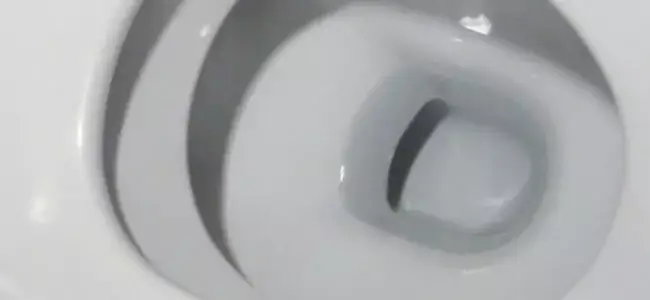Do you need a bigger septic tank size?

TABLE OF CONTENTS
When building, buying or renting a house, it is important to know the recommended septic tank size for the property. Getting a house that has the wrong septic tank size will get you in trouble when the tank gets full too soon. If the septic tank fails, the government might require you to install a new one altogether and that will cost you thousands of dollars. To avoid this, make sure you have the right size of the septic tank from the very onset.
Using the number of bedrooms to determine septic tank size
The law requires you to use the number of bedrooms in determining the size of the septic tank to install on a property. This is mainly because the number of bedrooms will give a clear picture of the maximum occupancy of the house. All of the wastewater from the house will make its first stop in the septic tank and so you want to get the correct size. The wastewater should stay in the tank for at least 24 hours before it moves into the drainfield. sizing of the septic tank properly is important because it ensures there is enough liquid in the tank to allow for settling of suspended solids as well as breaking down of organic waste by bacteria. Otherwise not, the solids will flow out of the tank and get into the drain field which will result in its blockage. The table below shows the recommended septic tank sizes based on the number of bedrooms.
| Number of bedrooms | Minimum capacity in gallons |
| 1 – 3 | 750 |
| 4 | 850 |
| 5 – 6 | 1,050 – 1,500 |
Using water usage to determine the septic tank size
Even after using the number of bedrooms to determine the most ideal size of the septic tank, you may want to put other factors into consideration. Two homes of the exact same size could have different water consumption rates. For instance, if you will be using a garburator, the wastewater that goes into the septic tank will be more. You may also need to factor in high volume fixtures. The table below gives the flow rates of some of the commonly used plumbing fixtures and the estimated demand during peak times.
| USE | FLOW RATE (GALLONS PER MINUTE) | TOTAL USE (GALLONS) |
| Bathroom sink | 2 | 1-2 |
| Backwash filters | 10 | 100-200 /backwash cycle |
| Garbage disposer | 3 | 4-6 per day |
| Dishwasher | 2 | 5/load |
| Kitchen sink | 3 | 2-4/use |
| Shower/ tub | 5 | 25-60/use |
| Toilet flush (pre-1992 design) | 3 | 4-7/use |
| Toilet flush (high-efficiency design) | 3 | 1.28/use |
| Washing machine | 5 | 15-30/load |
Others factors that determine the size of the septic tank
Septic pumping chambers – in some jurisdictions, the size of the septic tank can also be determined by the number of pumping chambers in the septic tank. For instance, a septic tank that has an integral lift station pumping chamber must have an additional capacity of 250 gallons.
Local weather – the climatic conditions of the area where the septic tank is being installed must also be taken into account. In extremely cold climates like in Alaska and some parts of northern Canada, the cold temperatures will reduce the rate at which anaerobic bacteria break down the waste in the tanks. For this reason, the septic tanks in these regions should be bigger. The bigger the tank size, the longer the retention time and so the slow anaerobic bacteria will get sufficient time to digest the waste.
Legal standards – before designing and installing the septic system, it is always a good idea to find out if there are any legal standards that you need to adhere to. For instance, even though a 750-gallon septic tank is good enough for a 2-bedroom house, there might be a legal standard of not installing septic tanks that are less than 1,000 gallons in capacity.
Future renovations – If you intend to do some renovations on your home that include the addition of another bedroom, you may want to install a larger septic tank. This way, you won’t have to replace the septic tank when the renovations start.
Conclusion
Getting the right septic tank size will save you a lot of trouble. For starters, you will not be in violation of any legal standards that apply in your jurisdiction. Additionally, installing the appropriate septic tank for your home will ensure that the septic system runs efficiently all year round without any issues. It will also help to lengthen the life span of your septic system.
OUR LATEST BLOG POSTS

Strange facts about septic systems
If you are a septic system owner, you might have heard all manner of myths. For instance, there is a common myth that throwing a dead cat in the septic tank can help rejuvenate bacteria and thereby make the septic tank more effective. But is this even true? In this article, we will not only answer that […]

Soils types and their impact on septic systems
SOILS TYPES AND THEIR IMPACT ON SEPTIC SYSTEMS However good your septic system is, it depends on the right soil type to complete the process of purifying the wastewater from your home. The soil type in the drainfield area will determine how well the effluent is filtered and if the water that is sent back to the […]

Avoid flushing these if you have a septic tank
Most homeowners wrongfully assume that their toilet can serve as some sort of garbage disposal. As a result, they end up flushing all manner of things in the toilets. Some of the things that are flushed down the toilet are actually innocent mistakes because homeowners think that is the right way to dispose of the products while in other cases, it is just a don’t care attitude. Whichever the case may be, flushing some of these things can result in septic system failure and it could cost you a fortune. We have rounded up some of the commonly-flushed products that you should never flush if you have a septic system.
PERFECT! I WOULD NEED...
Discover which products are the best for your needs!You can contact us at 1-800-378-6132 (toll free) or click on the following button to access our free online evaluation.
GET A QUOTE ONLINELog in to your account
Whoops! It happens sometimes...
CREATE A NEW ACCOUNT
CONGRATS!
You are now registered and ready to go. You can add and change any of your information on your client profile.
Unfortunately, we do not ship our products to the USA at the moment.
But, if you live in the United States and would like to order them, please fill in the form below. You will then be notified as soon as they are available in your country.
Thank you for your understanding!
Malheureusement, nous n’expédions pas nos produits en France pour le moment.
Mais, si vous êtes résident français et aimeriez les commander, remplissez s’il vous plaît le formulaire ci-dessous. Nous pourrons ainsi vous aviser aussitôt qu’ils seront disponibles dans votre pays.
Merci de votre compréhension!

-
30 products to avoid
-
What to replace them with
-
And everything you should know about your septic system
DOWNLOAD THIS FREE EBOOK!
Which email address should we send it to?


